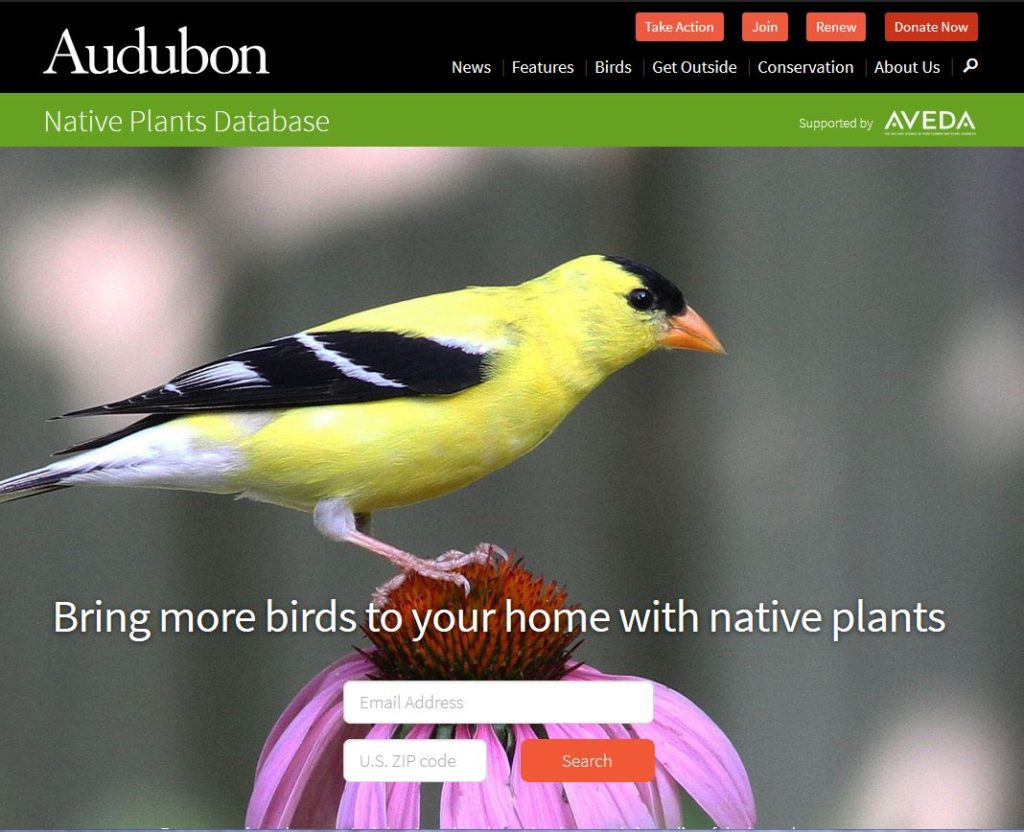In my reading I came across this link to Audubon’s Native Plant Database. Where, for the mere mention of your zip-code and an email address, you can find the native plants for your area that will help to bring birds to your yard.

Cool thing is, the image on that page was of a male goldfinch standing atop a purple coneflower, Echinacea.
We’re treated to this site every summer and fall season. As the purple flowers mature and the cones grow taller the finches visit more often. They dine on the seeds whenever they’re deemed ready. I really do get enjoyment seeing the brilliantly colored birds carefully standing on the spiky seed heads to get at their lunch.
We have a perfect view from the kitchen window to spy on them being so busy. If the window is open, you can hearing them chattering to one another!
They don’t eat all the seeds though. Plenty of little Echinacea plants pop up each year to keep the cycle going. We dig up some of the little plants and share them with friends. Great reason to keep a few planters around the garage, but if that’s not handy just use a plastic bag from the grocery store – one without holes – makes a nice carryall to keep the dirt and moisture in, too.
Even into winter the finches keep coming back to visit the coneflowers to eat up on the plentiful seeds. The plants of course aren’t green then and look pretty straggly. Most people would probably cut down the unsightly brown flower stalks, but we know the secret. If you let the flowers stand with their seed heads long enough, you’ll be able to keep seeing goldfinches well into Autumn and maybe even winter. It’s Springtime by the time we clean up the flower beds of last year’s growth.
By the way just last week I saw a flock of goldfinches hopping and flitting around the ground while they were busy consuming a bunch of dandelion seeds. I wonder what other seeds they might consume!
Audubon’s Native Plant Database is a fantastic resource of native plant and bird information. You can narrow down a list of hundreds of native plants for your locale to just a few dozen that would be the type of plant you’re seeking, including annuals, perennials, shrubs, grasses, trees, vines, succulents and evergreens. The types of birds you want to attract, from hummingbirds to finches to woodpeckers to waxwings and more, can be selected. Also, the type of plant resource can be filtered from your list of plants, such as nectar, fruit, butterflies, caterpillars, nuts and seeds.
My kind of bird watching is to plant flowering plants that attract birds naturally. That way I don’t have to remember to fill bird feeders or curse the squirrels that destroy them. An added benefit is that bears don’t seem to be attracted to the plants in the same way they’re attracted to the seed feeders, which is a necessary consideration where we live on the mountain ridge. A definite exception there is if sunflowers are in bloom bears will always check out those big flowers!
Give it a go by inputting your zip-code to see all the native plants that could be attracting birds to your yard. I’ll be checking this out before I head out to the local greenhouses this week. Good luck!